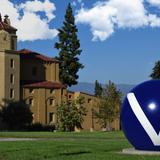- Community Christian College is a private Christian junior college in Redlands, California.
School Highlights
Community Christian College serves 793 students (74% of students are full-time).
Minority enrollment is 96% of the student body (majority Black), which is more than the state average of 77%.
Quick Facts (2025-26)
- Enrollment: 793 students
- Private-state tuition: $6,485
- Minority enrollment: 96%
- Source: Integrated Postsecondary Education Data System (IPEDS)
Top Rankings
Community Christian College ranks among the top 20% of public schools in California for:
Category
Attribute
School Resources
School Overview
The teacher population of 8 teachers has stayed relatively flat over five years.
Community Christian College
(CA) Community College Avg.
Carnegie Classification
Associate's Colleges: High Transfer-High Nontraditional
Baccalaureate/Associate's Colleges: Associate's Dominant
Institution Level
At least 2 but less than 4 years
At least 2 but less than 4 years
Institution Control
Private not-for-profit
Public
Total Faculty
8 staff
315 staff
Student Body
The student population of Community Christian College has grown by 290% over five years.
The Community Christian College diversity score of 0.38 is less than the state average of 0.70. The school's diversity has declined by 27% over five years.
Total Enrollment
793 students
9,796 students
Student-Teacher Ratio
99:1
32:1
# Full-Time Students
586 students
1,259 students
# Part-Time Students
207 students
8,537 students
# Enrollment Undergraduate
793 students
242 students
# Full-Time Undergraduate Students
586 students
1,250 students
# Full-Time Graduate Students
n/a
63 students
# Part-Time Undergraduate Students
207 students
8,299 students
# Part-Time Graduate Students
n/a
10 students
Total Dormitory Capacity
n/a
121 students
% American Indian/Alaskan
1%
n/a
% Asian
1%
13%
% Hispanic
9%
47%
% Black
78%
7%
% White
4%
23%
% Hawaiian
n/a
1%
% Two or more races
7%
5%
% Non Resident races
n/a
1%
% Unknown races
n/a
3%
Diversity Score
0.38
0.70
College Completion Rate (Students who graduate in less than 4 years)
16%
42%
College Completion Rate (Students who graduate in 4 years or more than 4 years)
n/a
43%
Tuition and Acceptance Rate
The private state tuition of $6,485 is less than the state average of $17,819. The private state tuition has declined by 33% over four years.
Private State Tuition Fees
$6,485
$17,819
% Students Receiving Some Financial Aid
99%
85%
Median Debt for Graduates
n/a
$10,500
Median Debt for Dropouts
$3,583
$5,500
Acceptance Rate
n/a
93%
Source: 2024 (or latest year available) Integrated Postsecondary Education Data System (IPEDS) , School Administrators
Frequently Asked Questions
How much does Community Christian College cost?
Community Christian College's private state tuition is approximately $6,485.
What is Community Christian College's ranking?
Community Christian College ranks among the top 20% of community college in California for: Average community college minority breakdown and Percent of students receiving financial aid.
In what neighborhood is Community Christian College located?
Community Christian College is located in the Northwest Redlands neighborhood of Redlands, CA.
Recent Articles

Community College Success Rates 2025: Outcomes & Trends
Updated 2025 analysis of community college success rates, completion, transfer, costs, enrollment, and strategies that shape student outcomes.

Community Colleges in 2025: Combating Stereotypes with Impact
Updated insights on how community colleges are dispelling myths, growing enrollment, and expanding pathways in 2025.

2025 FAFSA Changes Explained for Community College Students
A comprehensive guide to 2025 FAFSA changes, what community college students must know, new eligibility rules, timelines, and tips to maximize federal aid.











